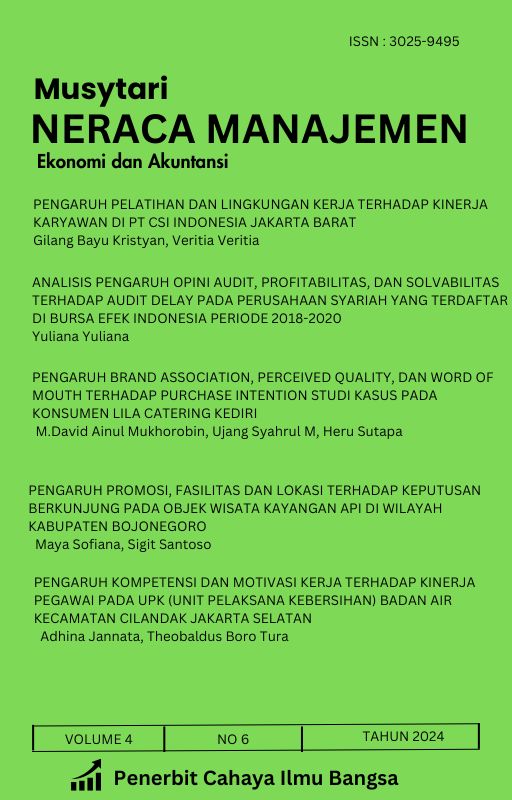MEMBANGUN STRATEGI PREVENTIF PROAKTIF UNTUK MENANGKAL PENCURIAN IDENTITAS DI ERA SIBER
Main Article Content
Abstract
This article aims to develop effective strategies to address the issue of personal data theft. Referring to the identity theft cycle as outlined in previous studies, it proposes a more comprehensive prevention approach through a combination of technological strategies, legal policies, and consumer awareness to minimize the risks and impacts of data theft. The study employs a qualitative approach through literature reviews, conceptual analysis, and case study evaluations. Secondary data is collected from academic sources, policy reports, and case studies highlighting data theft patterns to construct a comprehensive framework for data theft prevention. The unit of analysis includes individuals as identity theft victims, organizations as service providers and data owners, and regulators responsible for data protection and digital security policies. Preliminary findings indicate that implementing integrated security strategies—such as cyber awareness education and training, the use of encryption technologies and multi-factor authentication, and cross-sector collaboration—can significantly reduce the likelihood and impact of data theft. This study contributes to knowledge-building by integrating findings from literature and real-world cases and by developing a strategic framework that serves as a reference for cybersecurity researchers and practitioners. This framework can support the formulation of policies and technological innovations that are more adaptive to the evolving threats of data theft in the digital era. However, challenges remain in quantitatively measuring the effectiveness of these strategies, as the variability of conditions and the dynamics of data theft attacks require long-term evaluation to assess their global impact on reducing identity theft rates
Artikel ini bertujuan mengembangkan strategi efektif dalam mengatasi permasalahan pencurian data pribadi. Mengacu pada siklus pencurian identitas sebagaimana diuraikan dalam penelitian sebelumnya, artikel ini mengembangkan pendekatan pencegahan yang lebih komprehensif dengan kombinasi strategi teknologi, kebijakan hukum, dan kesadaran konsumen untuk meminimalkan risiko dan dampak pencurian data. Penelitian ini menggunakan pendekatan kualitatif melalui studi literatur, analisis konseptual, dan evaluasi studi kasus. Data sekunder dikumpulkan dari sumber akademis, laporan kebijakan, serta studi kasus yang menyoroti pola pencurian untuk menyusun kerangka strategi pencegahan pencurian data yang komprehensif. Unit analisis dalam penelitian ini mencakup individu sebagai korban pencurian identitas, organisasi sebagai penyedia layanan dan pemilik data konsumen, serta regulator yang bertanggung jawab dalam perlindungan data dan kebijakan keamanan digital. Hasil penelitian awal menunjukkan bahwa implementasi strategi keamanan terintegrasi, seperti edukasi dan pelatihan kesadaran siber, penerapan teknologi enkripsi dan autentikasi ganda, serta kerjasama lintas sektor, secara signifikan dapat mengurangi potensi dan dampak pencurian data. Penelitian ini berkontribusi dalam membangun pengetahuan dengan menyatukan berbagai temuan dari studi literatur dan kasus nyata, serta mengembangkan kerangka kerja strategis sebagai referensi bagi peneliti dan praktisi keamanan siber. Kerangka ini dapat digunakan untuk merumuskan kebijakan dan inovasi teknologi yang lebih adaptif terhadap perkembangan ancaman pencurian data di era digital. Sayangnya, terdapat tantangan dalam mengukur efektivitas strategi secara kuantitatif, sebab variabilitas kondisi dan dinamika serangan pencurian data serta efektivitas strategi yang diusulkan memerlukan evaluasi lebih lanjut dalam jangka panjang untuk mengukur dampaknya terhadap pengurangan tingkat pencurian identitas secara global.
Downloads
Article Details
Section

This work is licensed under a Creative Commons Attribution-NonCommercial-ShareAlike 4.0 International License.
How to Cite
References
Fakiha, B. (2021). Business organization Security Strategies to Cyber Security Threats. International Journal of Safety and Security Engineering, 11(1), 101–104. https://doi.org/10.18280/ijsse.110111
N. H. A., Hamid, S., Kiah, L. M., Shamshirband, S., & Furnell, S. (2015). A systematic review of approaches to assessing cybersecurity awareness. Kybernetes, 44(4), 606-622. https://doi.org/10.1108/K-12-2014-0283
Moorthy, R. S., & Pabitha, P. (2020). Optimal detection of phishing attack using SCA-based K NN. Procedia Computer Science, 171, 1716–1725. Elsevier https://doi.org/10.1016/j.procs.2020.04.184
Wang, X., Wen, Q., Li, C., & Guo, J. (2024). Studying subthreshold resonance using the Trojan horse method. Physics Letters B, 854, 138745. https://doi.org/10.1016/j.physletb.2024.138745
Paul, A., Sharma, V., & Olukoya, O. (2024). SQL injection attack: Detection, prioritization & prevention. Journal of Information Security and Applications, 85, 103871. https://doi.org/10.1016/j.jisa.2024.103871
Kaur, P., & Sharma, S. (2015). Spyware detection in Android using hybridization of description analysis, permission mapping and interface analysis. Procedia Computer Science, 46, 794– 803. https://doi.org/10.1016/j.procs.2015.02.148
Mahmud, R. (2019). Pencurian Identitas: Kategori & Kasus. CyberSecurity dan Forensik Digital, 2(1), 38-42. https://doi.org/10.14421/csecurity.2019.2.1.1421
Uchill, J. (2017), “'Hack the Air Force' challenge most successful military bug bounty yet”, The Hill, 10 August, available at: https://thehill.com/policy/cybersecurity/346016-hack-the airforce-challenge-most-successful-military-bug-bounty-yet/
Lahcen, R. a. M., Caulkins, B., Mohapatra, R., & Kumar, M. (2020). Review and insight on the behavioral aspects of cybersecurity. Cybersecurity, 3(1). https://doi.org/10.1186/s42400-020-00050-w
Zahwani, S. T., & Nasution, M. I. P. (2024). Analisis Kesadaran Masyarakat Terhadap Perlindungan Data Pribadi di Era Digital. Zahwani | Journal of Sharia Economics Scholar (JoSES). https://doi.org/10.5281/zenodo.12608751
Hasan, M. S., Rahman, R. A., Abdillah, S. F. H. B. T., & Omar, N. (2015). Perception and Awareness of Young Internet Users towards Cybercrime: Evidence from Malaysia. Journal of Social Sciences, 11(4), 395–404. https://doi.org/10.3844/jssp.2015.395.404
Conger, K. (2017), “Hacking the Army”, TechCrunch, 19 January, available at: https://techcrunch.com/2017/01/19/hacking-the-army/
Donaldson, S. E., Siegel, S. G., Williams, C. K., & Aslam, A. (2015). Enterprise Cybersecurity. In Apress eBooks. https://doi.org/10.1007/978-1-4302-6083-7
Pham, Lan. (2018). A Review of key paradigms: positivism, interpretivism and critical inquiry. http://dx.doi.org/10.13140/RG.2.2.13995.54569
Singh, J., Pasquier, T., Bacon, J., Ko, H., & Eyers, D. (2015). Twenty Security Considerations for Cloud-Supported Internet of Things. IEEE Internet of Things Journal, 3(3), 269–284. https://doi.org/10.1109/jiot.2015.2460333
